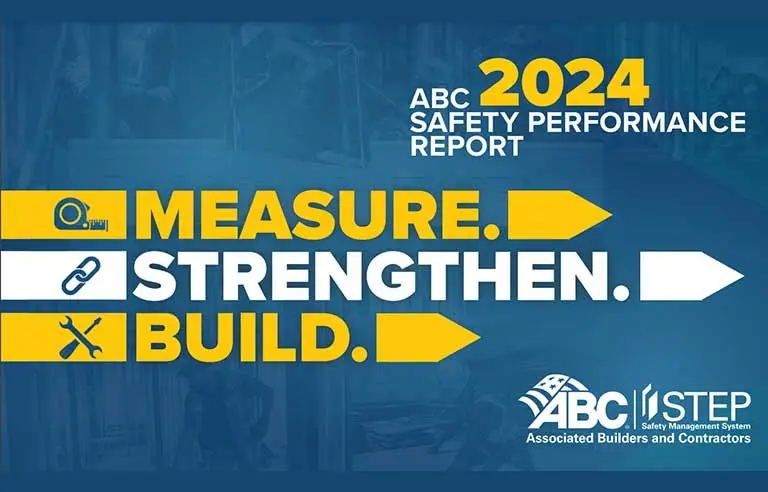
Washington — Engagement of top management and substance misuse prevention programs are among four essential safety best practices of construction industry employers, Associated Builders and Contractors says.
ABC, a national trade association representing the nonunion construction industry, recently released its annual guide to construction jobsite health and safety best practices. The 2024 Safety Performance Report is based on 2023 data from organizations that take part in ABC’s STEP Safety Management System. ABC collects each organization’s OSHA Form 300A data and “self-assessment of leading indicator practices” from its STEP application.
After analyzing the data, which covers more than 900 million work hours completed by participants in the construction, heavy construction, civil engineering and specialty trades, ABC identified four foundations of industry-leading safety best practices:
Top management engagement: Employer involvement at the highest level of company management produced a 54% reduction in total recordable incident rates, or TRIR, and a 52% reduction in days away, restricted or transferred rates, or DART rates.
Substance misuse prevention programs: Robust programs or policies with provisions for drug and alcohol testing where permitted led to a 48% reduction in DART rates and a 47% reduction in TRIR.
New-hire safety orientation: Employers who conducted in-depth new-employee training on safety culture, systems and processes during orientation had incident rates that were 45% lower than those that limited their orientations to basic health and safety compliance topics.
Toolbox talks: The more frequent, the better. The employers who conducted daily, 15- to 30-minute toolbox talks reduced TRIR and DART rates by 81% compared with those who hosted them monthly.
The seventh annual report also highlights the benefits of using key leading indicators, including pre-planning for project safety – which led to 61% lower DART rates and 60% lower TRIR – and supervisor safety training, which resulted in a 58% reduction in both rates.
“If we choose to lead, if we choose to commit and if we chose to transform, together we will create the conditions for everyone to do their work without incident and go home safer, healthier, happier and fulfilled every day,” Greg Sizemore, vice president of health, safety, environment and workforce development at ABC, said in a press release.
McCraren Compliance offers many opportunities in safety training to help circumvent accidents. Please take a moment to visit our calendar of classes to see what we can do to help your safety measures from training to consulting.
Original article published by Safety+Health an NSC publication


